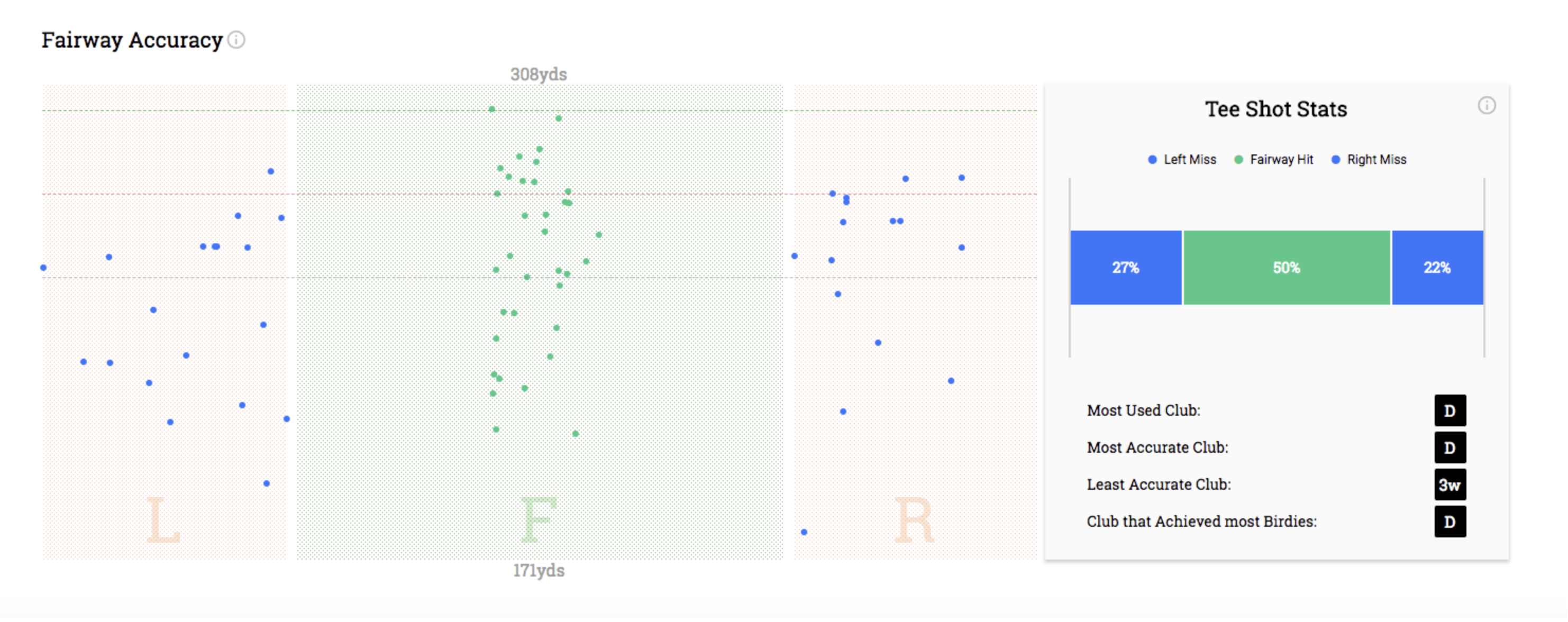
Traditional golf statistics do not give a complete picture of your performance on the course. They're a good starting point, but stats like putts per round can be misleading. In this article, I want to focus on why fairways hit is an incomplete statistic.
Tee shot performance is critical to scoring. But if you are only tracking your progress by how many fairways you hit versus missed, you are not getting an accurate representation of your success off the tee.
I'm going to offer an alternative way to track tee shots. Hopefully, my different view will help manage your expectations more appropriately and help you focus on how to improve.
The Goal of a Tee Shot
Whenever you tee it up on a par 4 or par 5, the general goal should be to hit the ball as far as you can while keeping it in play. Golf is a game of proximity, and modern statistical analysis has proven that the closer you are to the hole off the tee, your opportunity to post a lower score increases. Additionally, being in the fairway is not always a requirement.
Choosing an optimal target and club selection based on the design of the hole helps improve your chances. In this article, I discussed how I use dispersion analysis and hole layouts to plan out my tee shots.

Long story short, no matter what level of golfer you are, you want to keep the ball in front of you. While errant tee shots can't be prevented entirely, they can cause a lot more damage to your overall score compared to poor putting performance.
However, I am against using the fairway as the only measuring stick of success. I believe that even if you miss a fairway, but still have a clear path to the green with a manageable lie, then I would say you were successful.
Varying Levels of Success
When I discussed golfer performance by handicap level, I showed that a tee shot landing in the trees costs a golfer around 1.1 shots. A fairway bunker is even more penal at 1.4 shots. But the light rough? It's only a penalty of about 1/3rd of a shot. Of course, landing in the fairway gives you the best chance to hit the green, but all is not lost if you don't keep your tee shot on the short stuff.

In my estimation, it makes sense to group tee shot results into four separate categories:
- Fairway - perfect lie, and a clear path to the green.
- Rough - manageable lie, and a clear path to the green.
- Trouble - in the trees, fairway bunker, or a tough lie in rough. Any recovery situation that makes it unlikely you will be able to reach the green.
- Penalty - if your ball goes out of bounds, is lost, or in a penalty area.
I can't account for every situation on the course, but I feel you can use these four scenarios as simple guidelines. You could even lump the last two (trouble/penalty) together if you would like. Another caveat would be the dreaded topped tee shot; you can add that to the trouble category.
Speaking anecdotally, I can tell you that one of the keys to lowering your scores is eliminating trouble and penalty tee shots. A lot of golfers get upset with themselves if they miss a fairway. But if you're still in play, and can easily get your ball near the green or on it, you've substantially eliminated your chances of making a double bogey. That my friends is one of the keys to becoming a better golfer.
As a side note, I should also warn you against trying to make up for your mistakes with aggressive play when you do get into a recovery situation. If you make bogey, you'll be keeping pace with PGA Tour players, which I discussed in this article. Get your ball back in play, and take your medicine.
Keeping Track
While I don't believe all golfers need to keep close track of their statistics, I do think it is a good idea for most of you. With technology, there are plenty of apps and shot-tracking systems that help you keep track of your shots on the course.
You can get very interesting visual representations of your tee shots that can help you make smarter strategic decisions and even evaluate your equipment.


If you track your stats the old fashioned way, I encourage you to go beyond fairways hit with these four (or three) categories. You could rename the stat "successful tee shots" - and keep track of your percentage of tee shots that land in the first two categories (fairway and rough). For example, let's say you hit 5 fairways and had eight other tee shots that avoided trouble and penalty situations, then your successful tee shots would be 13/18, or 72% for the day. That's not too bad!
I think many of you will find that you might not be as bad off the tee as you think. Additionally, if you are finding that the amount of trouble and penalty situations is substantial, it might be worth looking into the source of the issue. It could be club/target selection, equipment issues, or a technical problem in your golf swing.
We care about the protection of your data Read our Privacy Policy